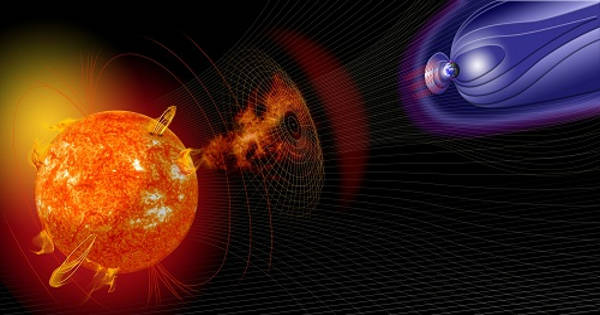We didn’t discover as much about Charon as we did about Pluto because New Horizons never approached Charon as closely. A crimson “cap” at the North Pole known as Mordor Macula stood out from other ice worlds we have spotted around genuine planets, though. Although it may be tempting to picture “Make Pluto a Planet Again” scribbled by extraterrestrials against the fiery background, scientists have searched for more plausible explanations and now believe they have found one. Astronomers quickly surmised that the cap was composed of tholins, sticky hydrocarbon byproducts produced when methane breaks down when exposed to UV radiation.
Any methane that meets Charon is chilled to the point that it cannot rapidly leave even in this low gravity, leading scientists to believe that the methane has escaped from Pluto. A team from the SouthWest Research Institute claims in Science Advances that the hue of Charon’s tenuous atmosphere is a result of seasonal variations.
The research, which has the intriguingly catchy title “Charon’s Refractory Factory,” suggests a multi-stage process that starts during Charon’s winter when methane freezes in the presence of Lyman-alpha radiation, a kind of UV light that is dispersed by interplanetary hydrogen. The authors simulated Charonian circumstances at the new Center for Laboratory Astrophysics and Space Science Experiments, however it will be some time before we can check them out for ourselves.
According to a statement from Dr. Ujjwal Raut, “Our experiment condensed methane in an ultra-high vacuum chamber while being exposed to Lyman-alpha photons to mimic with great precision the circumstances at Charon’s poles.” In the spring, when Charon has warmed up enough for the methane to re-gas and undergo other changes, the result, which is mostly colorless ethane, remains frozen. In order to create increasingly complex, redder minerals, Lyman-alpha-cooked polar frost is thought to be decomposed by ionizing radiation from the solar wind, according to Raut. These components are what give this mysterious moon its distinctive albedo.
Raut called the work “one of the most vivid and striking examples of surface-atmospheric interactions so far detected at a planetary body,” however the team has yet to corroborate this component of the process in the lab, something they want to undertake next. The finding was supported by a computer model in a subsequent publication by the same team that was printed in Geophysical Research Letters. Lead author Dr. Ben Teolis stated, “The model leads to ‘explosive’ seasonal pulsations in Charon’s atmosphere due to dramatic fluctuations in circumstances throughout Pluto’s lengthy voyage around the Sun.
One to four Earth years are believed to be the duration of these pulses, which may seem like a long time until you understand that Charon’s year is 248 Earth years. The disparity in temperature between the winter and summer poles on Charon is caused by the fact that it receives little sunlight, yet because of its tilt, practically all of what does reach it falls on the summer hemisphere.
Around the equinox, frozen methane transforms into gas, nearly tenfold raising air pressure, before refreezing in the opposite hemisphere. According to the scientists, only 10% of the methane captured by Charon is finally transformed into reddish hydrocarbons, while 90% eventually escapes the low gravity and is replaced by new plutonian material. Even while night obscured our view of Charon’s South Pole, there were indications that the moon may have red shoes to match its cap. It simply goes to show that a moon can be really amazing without becoming a planet.
















